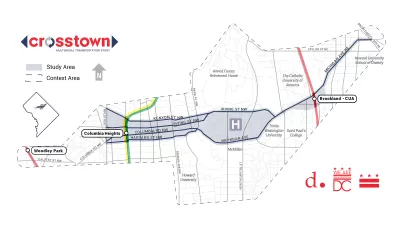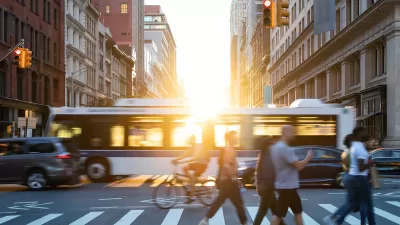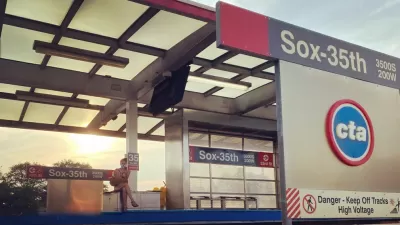A new study finds a connection between multimodality and income inequality in midsized cities.

"Looking at 148 midsize cities across the country, researchers found that income inequality declined when the percentage of commuters using some form of transportation other than single occupancy vehicles increased," reports Leah Binkowitz.
The study, by Chad Frederick and John Gilderbloom, both from the Centre for Sustainable neighborhoods at the University of Louisville, was published in October by the Local Environment journal.
The article by Binkowitz allows Frederick a chance to explain the importance of the findings, highlighted by the summary that a little bit of multi-modality goes a long way for income equality. "If you have 20 percent multimodality and go to 25 percent, you should see some very significant differences in all kinds of social outcomes," says Frederick in his own words, as quoted in the article. That reach means that transportation policy might have more impact than other policies governments could focus on to improve income equality. It also means that incremental changes can have outsized benefits.
FULL STORY: The Link Between Cars and Income Inequality

Trump Administration Could Effectively End Housing Voucher Program
Federal officials are eyeing major cuts to the Section 8 program that helps millions of low-income households pay rent.

Planetizen Federal Action Tracker
A weekly monitor of how Trump’s orders and actions are impacting planners and planning in America.

Ken Jennings Launches Transit Web Series
The Jeopardy champ wants you to ride public transit.

Washington Legislature Passes Rent Increase Cap
A bill that caps rent increases at 7 percent plus inflation is headed to the governor’s desk.

From Planning to Action: How LA County Is Rethinking Climate Resilience
Chief Sustainability Officer Rita Kampalath outlines the County’s shift from planning to implementation in its climate resilience efforts, emphasizing cross-departmental coordination, updated recovery strategies, and the need for flexible funding.

New Mexico Aging Department Commits to Helping Seniors Age ‘In Place’ and ‘Autonomously’ in New Draft Plan
As New Mexico’s population of seniors continues to grow, the state’s aging department is proposing expanded initiatives to help seniors maintain their autonomy while also supporting family caregivers.
Urban Design for Planners 1: Software Tools
This six-course series explores essential urban design concepts using open source software and equips planners with the tools they need to participate fully in the urban design process.
Planning for Universal Design
Learn the tools for implementing Universal Design in planning regulations.
Heyer Gruel & Associates PA
Ada County Highway District
Institute for Housing and Urban Development Studies (IHS)
City of Grandview
Harvard GSD Executive Education
Toledo-Lucas County Plan Commissions
Salt Lake City
NYU Wagner Graduate School of Public Service





























